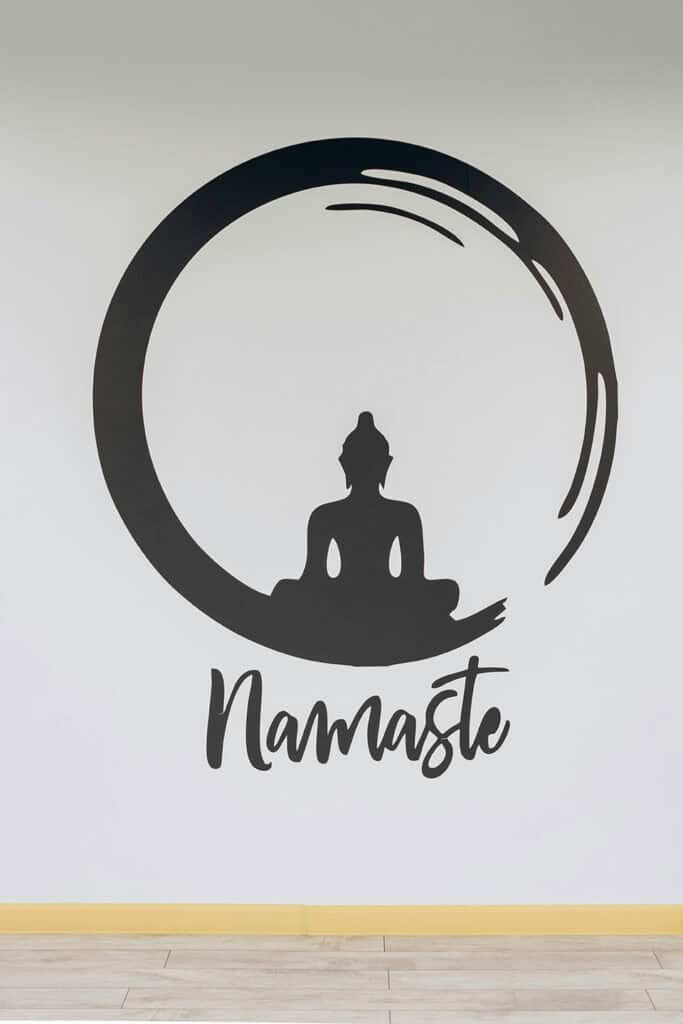


Are you seeking peace among life’s chaos? Deep meditation offers a path to tranquility and well-being. As the hero of your journey, you navigate daily challenges.
We understand the quest for inner peace. Our expertise in meditation practices will guide you.
In this article, we’ll explore the science behind deep meditation and its transformative benefits. Learn techniques to calm the mind, improve focus, and enhance emotional resilience.
Whether it’s reducing stress, improving focus, or enhancing emotional resilience, these practices offer a scientifically-backed path to inner peace and well-being
After exploring the transformative benefits of deep meditation, you’ll gain practical insights and techniques to integrate into your daily life.
Take the first step toward a calmer, more balanced life by exploring the profound benefits of deep meditation.
Imagine a life filled with clarity, resilience, and profound inner peace!
Here are 10 deep meditation techniques:
- Mindfulness Meditation: Focus on the present moment, observing thoughts and sensations without judgment.
- Breath Awareness: Concentrate on the natural flow of your breath to calm the mind and increase awareness.
- Body Scan: Mentally scan through your body to release tension and promote relaxation.
- Mantra Meditation: Repeat a word or phrase silently to maintain focus and calmness.
- Visualization: Imagine peaceful scenes or experiences to induce relaxation and positive emotions.
- Loving-Kindness Meditation: Cultivate compassion by directing loving-kindness towards yourself and others.
- Chanting: Recite repetitive sounds or phrases (chants) to deepen concentration and spiritual connection.
- Progressive Muscle Relaxation: Tense and relax muscle groups systematically to reduce physical tension.
- Sound Meditation: Focus on external sounds or soothing music to enhance mindfulness and relaxation.
- Movement Meditation: Practice mindful movements like walking or yoga to integrate body awareness with meditation.
See also Personal Development Plan Template: 10 Steps to Self-Improvement
Science Behind Deep Meditation

Deep meditation, such as mindfulness meditation, has garnered attention for its profound effects on mental and physical well-being. Scientific research supports its numerous benefits.
During a meditation session, practitioners typically sit quietly, focus on their breath, and employ techniques like mantras or visualization.
This deliberate attention to the present moment induces a state of relaxation, slowing heart rate and calming the nervous system. Studies suggest that regular meditation practice can reduce symptoms of depression, alleviate stress, and improve overall emotional resilience.
Additionally, deep meditation promotes better sleep, with just 10 minutes sleep meditation offering benefits akin to hours of restful sleep.
Understanding the science behind meditation reveals its power to positively impact brain function, enhancing cognitive abilities like attention, memory, and decision-making.
By teaching individuals to sit, breathe, and reflect, meditation empowers them to cultivate inner peace and well-being, offering a scientifically validated path to optimal health and wellness.
Here’s a list of 10 scientific perspectives behind deep meditation:
- Neuroplasticity: Meditation promotes brain changes that enhance learning and adaptation.
- Brain Waves: It induces alpha and theta waves linked to relaxation and creativity.
- Default Mode Network (DMN): Meditation reduces activity in the DMN, improving focus and present-moment awareness.
- Stress Response: It activates the parasympathetic nervous system, reducing stress hormones like cortisol.
- Emotional Regulation: Regular practice improves the ability to manage stress and emotions effectively.
- Gray Matter Density: Meditation increases gray matter in brain regions involved in learning and memory.
- Immune Function: It may strengthen the immune system by reducing inflammation.
- Cognitive Function: Enhances attention, concentration, and memory through improved neural connectivity.
- Pain Perception: Modulates pain perception and tolerance, possibly through endorphin release.
- Epigenetic Changes: Meditation influences gene expression without altering DNA, potentially impacting health and well-being.
Inner Peace Through Deep Meditation

Inner peace through deep meditation offers a profound sense of tranquility and calm among life’s chaos. Mindfulness practices, such as deeper meditation, mantra meditation, and guided meditation, serve as mental exercises, sharpening awareness and promoting inner stillness.
Scientifically, these practices induce deep relaxation responses, lowering blood pressure and alleviating stress. By focusing on the breath or repeating a personal mantra, individuals can access mental clarity and deeper levels of concentration.
Moreover, meditation apps and guided sessions facilitate ease of practice, enhancing accessibility and consistency. Regular meditation not only relaxes the body but also calms the mind, feelings of joy and peace.
It improves sleep quality, reduces anxiety, and cultivates emotional balance. Through meditating, individuals connect with their inner selves, experiencing a profound sense of relaxation and harmony.
As awareness deepens, so does the ability to navigate life’s challenges with resilience and grace, ultimately leading to a more fulfilling and peaceful existence and personal growth.
Here’s a list of 10 ways to achieve inner peace through deep meditation:
- Quiet Environment: Find a peaceful space without distractions.
- Comfortable Position: Sit or lie down comfortably.
- Focus on Breath: Inhale and exhale deeply and slowly.
- Mindfulness: Acknowledge thoughts without attachment.
- Relaxation: Release tension throughout your body.
- Consistent Practice: Meditate daily to deepen your practice.
- Guidance: Use guided meditations or soothing music.
- Present Moment: Stay focused on the here and now.
- Gratitude: Reflect on things you’re thankful for.
- Compassion: Show kindness to yourself and others.
Deep Meditation Techniques

Deep meditation techniques encompass various methods aimed at achieving profound states of relaxation and awareness. One such technique is shower meditation, where the soothing sensation of water aids in calming the mind and body.
Scientifically, deep meditation has been shown to activate the parasympathetic nervous system, triggering a relaxation response that reduces stress hormones like cortisol.
This process involves focusing on the breath, a mantra, or visualization, which helps quiet the mind and induce a state of calm. Yoga, another technique, combines physical postures with breathwork to enhance relaxation and deepen the meditative experience.
Incorporating deep breathing techniques into daily practice can begin the process of relaxation, paving the way for deeper states of meditation and overall well-being.
Here are 10 Deep Meditation Techniques:
1. Mindfulness Meditation
Mindfulness meditation is a transformative practice that cultivates present-moment awareness and inner peace. In a meditation session, practitioners engage in deep meditation techniques, focusing on the breath and observing thoughts without judgment.
This meditative practice is integral to self-care planners, offering relief from anxiety and stress. By anchoring attention to the breath and body sensations, individuals relax and feel a sense of calm.
Through consistent mindfulness meditations, practitioners find joy in the process, experiencing profound relaxation and a deep connection with themselves. Ultimately, mindfulness meditation enhances overall well-being, helping a state of calmness and clarity among life’s challenges.
2. Breath Awareness
Breath awareness is a cornerstone of mindfulness meditation, aiding individuals in anchoring themselves to the present moment. Incorporating this technique into daily meditation sessions or practices helps cultivate a deep state of relaxation and focus.
By simply observing their breath, individuals can enter a meditative state, self-care reminders, and self-love checklist. Incorporating breath awareness into a self-love checklist can serve as a reminder to prioritize moments of stillness and reflection.
Even a few minutes of breath-focused meditation may yield profound benefits, offering a pathway to inner peace and tranquility among life’s daily hustle and bustle.
3. Body Scan
Body Scan is a potent among personal growth tools, widely used in meditation practices by both novices and experienced meditators. This technique involves systematically directing focused attention throughout the body, observing sensations without judgment.
As practitioners scan, they notice how the body feels, aiding in stress reduction and promoting relaxation.
By concentrating on each body part, from head to toe, Body Scan helps regulate the nervous system, helping a relaxed state.
It enhances daily life by sharpening awareness and promoting mindfulness. Employing guided imagery, practitioners typically engage in Body Scan in a quiet spot, drawing from various meditation traditions for optimal benefit.
4. Mantra Meditation
Mantra meditation is a profound practice that shares the same goal as other meditation techniques, to facilitate deep introspection and inner peace.
It serves as an integral part of meditation practices worldwide, utilized as a powerful meditation tool for achieving deep states of consciousness.
In a meta-analysis, mantra meditation has shown efficacy in reducing anxiety and stress levels, making it a valuable practice in today’s fast-paced world.
By repeating a specific phrase or word, practitioners delve deeper into their subconscious, mindfulness, and tranquility. Whether seeking peace, stress relief, or a deeper understanding of oneself, mantra meditation offers a path to profound inner peace and serenity.
See also What is Perfect Love? 10 Insights into the Essence of Love
5. Visualization
Visualization is a powerful meditation practice that enhances mindfulness and reduces stress by guiding individuals to a deeper state of focus and relaxation. By incorporating vivid mental imagery, practitioners can evoke feelings of calm and joy, easing physical tension and promoting better sleep.
Through the process of focusing on specific scenes or scenarios, visualization meditations can amplify the benefits of mindfulness, leading to improved emotional well-being and reduced symptoms of depression.
By synchronizing visualization with deep breathing techniques, individuals can relax both body and mind, experiencing profound physical and mental relaxation while cultivating a sense of peace and balance in life.
6. Loving-Kindness Meditation
Loving-Kindness Meditation, also known as Metta, is a transformative practice that cultivates feelings of love, compassion, and goodwill toward oneself and others. To begin, one typically finds a comfortable posture, focuses on their breathing, and enters a state of deep meditation.
The practice involves silently repeating phrases from a love checklist, directing these sentiments toward oneself, loved ones, acquaintances, and even adversaries.
This meditative practice can enhance mindfulness and promote deeper meditation, which has been linked to reduced stress and lower blood pressure. By focusing attention and reciting one’s own mantra, practitioners can experience profound emotional healing and inner peace in just a few minutes of practice.
7. Chanting
Chanting, a profound aspect of deep meditation and personal growth stories, offers numerous benefits for mental and physical well-being.
Incorporating rhythmic chanting into meditation practices can alleviate symptoms of depression and promote relaxation. By focusing on the breath and the repetition of sacred sounds or mantras, individuals can begin the process of visualization and inner calm.
Chanting also helps in releasing tension from the body, joy, and deepening the meditation process. As one chant, the body relaxes, the mind calms, and the focus sharpens, creating a serene and tranquil state conducive to yoga and other meditative practices.
8. Progressive Muscle Relaxation
Progressive Muscle Relaxation (PMR) is a technique often used in deep meditation, yoga, and stress reduction practices.
It involves systematically tensing and then relaxing muscle groups throughout the body, promoting a state of deep relaxation conducive to meditation and deep sleep.
By focusing attention on each muscle group, individuals can reduce stress, lower blood pressure, and achieve a deeper sense of calm.
PMR is commonly incorporated into guided meditation sessions, deep sleep music, and guided imagery exercises, offering a simple yet effective way to relax and unwind in just a few minutes. It finds application in various traditions for enhancing focus and reducing stress in daily life.
9. Sound Meditation
Sound meditation involves using auditory stimuli like singing bowls or nature sounds to induce a meditative state conducive to relaxation and inner calm. By focusing on the soothing sounds, individuals begin the process of quieting the mind and releasing tension from the body.
This practice helps alleviate feelings of stress, anxiety, and depression, promoting feelings of joy and well-being.
As meditation helps to calm the mind and relax the body, it may assist in improving sleep quality and even aid in how to sleep early. By focusing on the breath and the sensations within, practitioners experience the physical and mental benefits of sound meditation, leading to a deeper sense of calm and balance.
10. Movement Meditation
Movement meditation, often associated with yoga, intertwines physical activity with mindfulness. Incorporating gentle movements like walking, yoga, or tai chi, engages the body and mind in harmonious synchronization.
Through conscious breathing and deliberate movements, practitioners cultivate self-love activities and inner awareness.
By focusing on the breath and bodily sensations, individuals relax and deepen their meditation practice. This meditative practice transcends different traditions, offering a holistic approach to well-being.
As one meditates through movement, the body feels invigorated yet calm, and the mind attunes to the present moment. Movement meditation becomes a way of life, infusing everyday activities with mindfulness and serenity.
Benefits of Deep Meditation

Deep meditation offers a plethora of benefits for individuals seeking to enhance their well-being and navigate life with greater clarity and purpose.
Incorporating deep meditation into one’s self-love routine helps a profound sense of inner peace and tranquility, promoting emotional resilience and overall life satisfaction.
Through deep breathing techniques and mindful awareness, practitioners of deep meditation experience heightened self-awareness and emotional regulation, leading to improved stress management and enhanced overall wellness.
Here are 10 Benefits of Deep Meditation:
- Stress Reduction: Promotes relaxation and lowers cortisol levels.
- Emotional Well-being: Reduces anxiety and enhances mood.
- Improved Focus: Strengthens attention and cognitive function.
- Better Sleep: Regulates sleep patterns for deeper rest.
- Pain Management: Reduces perception of chronic pain.
- Self-Awareness: Cultivates introspection and clarity of mind.
- Creativity: Stimulates creative thinking and problem-solving.
- Immune Support: Reduces inflammation and enhances immune response.
- Cardiovascular Health: Helps maintain healthy blood pressure.
- Spiritual Growth: Deepens spiritual connection and inner peace.
Deep Meditation on Brain Health

Deep meditation has profound effects on brain health, offering benefits that extend beyond relaxation. Practice Deep meditation involves focusing attention inward, allowing thoughts and feelings to arise and pass without judgment.
Regular meditation may lead to structural changes in the brain, improving memory, attention, and emotional regulation.
Through deliberate breathing techniques and mindfulness practice, practitioners can cultivate a deep sense of calm and clarity, supporting life planning and decision-making processes. By integrating deep meditation into daily life, individuals harness the power of the mind to enhance their quality of life.
Here’s 10 effects of deep meditation on brain health:
- Neuroplasticity: Promotes structural changes in the brain, enhancing learning and adaptation.
- Brain Waves: Induces alpha and theta waves associated with relaxation, creativity, and deep states of consciousness.
- Default Mode Network (DMN): Reduces activity in the DMN, leading to improved focus, attention, and present-moment awareness.
- Gray Matter Density: Increases gray matter in areas related to memory, emotional regulation, and decision-making.
- Stress Response: Activates the parasympathetic nervous system, reducing levels of stress hormones like cortisol.
- Cognitive Function: Enhances cognitive abilities such as attention, concentration, and memory.
- Emotional Regulation: Improves emotional resilience and regulation, reducing symptoms of anxiety and depression.
- Pain Perception: Modulates pain perception and tolerance through changes in brain regions involved in pain processing.
- Hippocampus Volume: Increases hippocampal volume, which is important for learning and memory.
- Mindfulness: Cultivates mindfulness, which enhances self-awareness, empathy, and stress management skills.
Importance of Consistency

Consistency in deep meditation is essential for reaping its profound benefits. Treating it as a mental exercise, regular practice facilitates access to deep states where clarity and tranquility reside.
Through deep meditation, individuals may develop sharper focus and heightened awareness, which can positively impact various aspects of life.
Here’s 9 tips for maintaining consistency in deep meditation practice:
- Establish a Routine: Meditate at the same time daily, like mornings or evenings.
- Start Small: Begin with 5-10 minutes and gradually increase.
- Create a Quiet Space: Designate a calm area for meditation.
- Set Reminders: Use alarms or calendar alerts to stay consistent.
- Commit: Make meditation a daily priority.
- Be Patient: Progress takes time; be patient with yourself.
- Explore Mindfulness: Practice mindfulness throughout the day.
- Track Progress: Keep a journal to note insights and improvements.
- Join a Community: Seek support from a meditation group or online community.
See also Self-Care Checklist Template: Your Roadmap to Wellness and Success
Deep Meditation: A Recap
Deep meditation, often intertwined with yoga, emphasizes the power of breath and focused attention. Regular practice of deep meditation, akin to mindfulness practice, can profoundly impact life.
By finding themselves in deep states regularly, individuals refine their ability to focus attention, heightened awareness, and peace.
Through deliberate breathing techniques, practitioners navigate the depths of their feelings and emotions, gaining insights into their inner landscape.
The journey of meditating deepens with consistent practice, gradually revealing the transformative potential within. In the world of breath and the stillness of focus, lies the essence of deep meditation.
As individuals continue to meditate, they harmonize mind, body, and spirit, enriching their lives with clarity, tranquility, and profound self-awareness. Deep meditation thus becomes not just a practice but a way of life, offering a path to greater understanding, fulfillment, and inner harmony.


